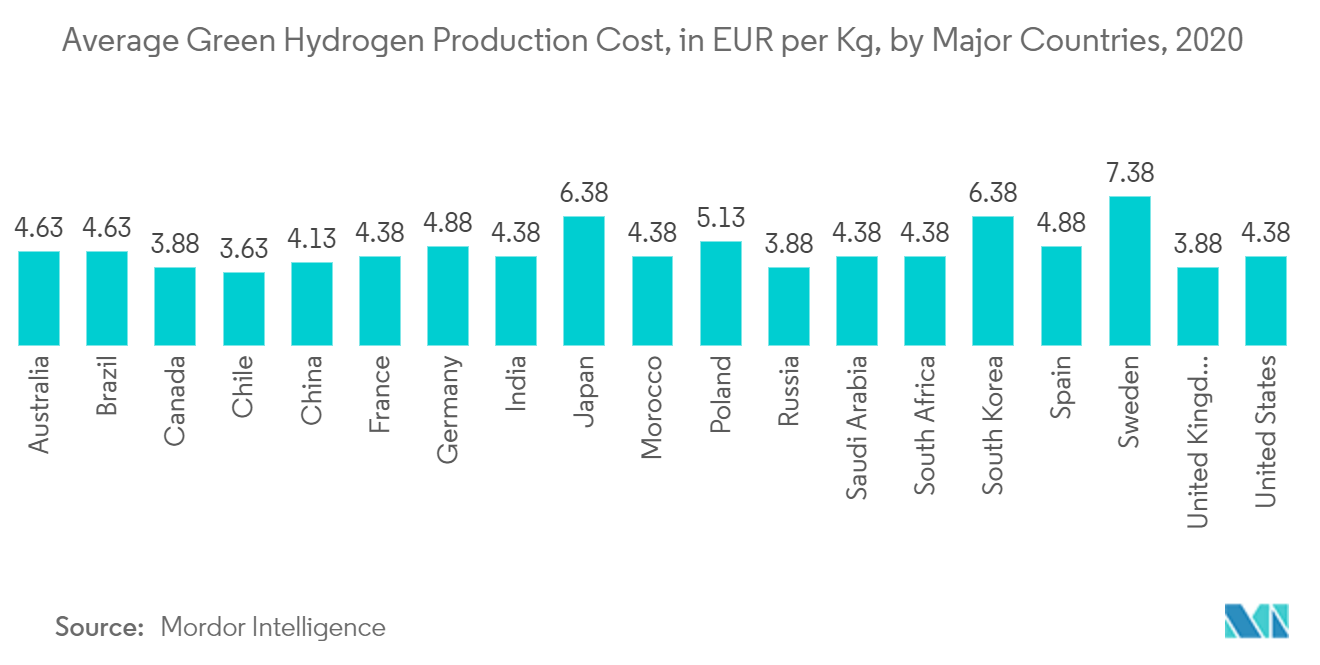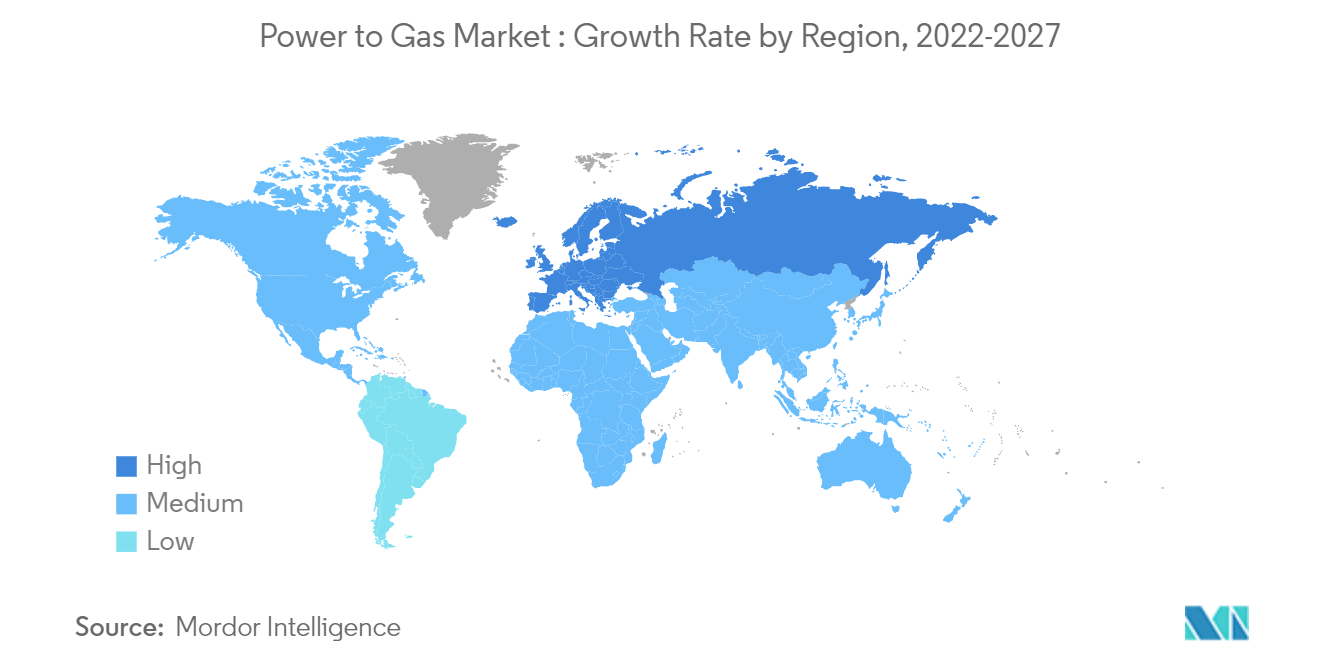Market Trends of Power to Gas Industry
Power-to-hydrogen to be the Fastest-growing Segment
- Power-to-hydrogen includes a range of technologies that utilize electricity to perform electrolysis and split water into hydrogen and oxygen. When hydrogen is manufactured using renewable energy, it is called green hydrogen and can be used to store, transport, and utilize renewable energy. This helps minimize variable renewable energy curtailment from sources such as wind and solar, provides long-term storage and grid-balancing services via electrolyzers, and uses existing gas transmission infrastructure for transporting energy in the form of green hydrogen over long distances.
- Additionally, nearly 350 projects with an aggregate capacity of 54 GW are currently under development and expected to come online by 2030; 40 other projects accounting for almost 35 GW capacity are in the early stages of development. If all planned projects are commissioned within time, it is expected that by 2030, the global green hydrogen supply from electrolyzers could reach 8 million tons per year.
- The green hydrogen produced by electrolyzers can also be used directly as a fuel for transport, replacing oil in light vehicles, railways, and marine applications, or as a feedstock for industrial applications. Green hydrogen fuel cells can also be used for energy storage.
- The technology offers advantages over current energy storage technologies, such as higher power storage capacity and longer discharge times. Hydrogen can also be injected directly into natural gas grids. However, due to safety and technical concerns, hydrogen injection is subject to regulations and varies from country to country. For instance, the limit of hydrogen in natural gas grids in the United Kingdom is 0.1%, while it is 12% in the Netherlands.
- Due to the falling costs of renewable energy technologies like solar and wind, energy storage technologies like power-to-gas (PtG) technology are becoming increasingly attractive. The installed capacity of commercial electrolyzer systems has been growing steadily over the past few years. There are only a few commercially viable water electrolysis technologies, and the two most widely used technologies are alkaline water electrolysis (AWE) and proton exchange membrane (PEM) electrolysis.
- Therefore, owing to the above factors, the power-to-hydrogen segment is expected to be the fastest-growing segment over the forecast period.

Europe to Dominate the Market
- As of 2021, Europe was one of the largest regions in the power-to-gas market. Increasing investments and funding grants by governments in the region are driving the market.
- In 2021, according to the European Commission, the refinery sector accounted for 48% of the hydrogen consumption, followed by the fertilizers and chemical sectors.
- Germany is one of the major countries in the European power-to-gas market. As of 2020, Germany was home to around 40 small power-to-gas pilot projects that harnessed surplus green power, mainly from wind and solar projects, to carry out electrolysis by splitting water into oxygen and hydrogen to produce zero-carbon fuel.
- According to Deutscher Verein des Gas- und Wasserfaches (DVGW), Germany is planning to build a power-to-gas capacity of 5 GW by 2023 and 40 GW by 2050 as it seeks to develop zero-carbon fuels for homes, factories, and vehicles. Thus, such government targets are likely to boost the power-to-gas market in the region during the forecast period.
- In January 2022, ThyssenKrupp Uhde Chlorine Engineers signed a supply contract with Shell for the large-scale project Hydrogen Holland I in Rotterdam, Netherlands port. Under the agreement, ThyssenKrupp Uhde will engineer, procure, and fabricate a 200 MW electrolysis plant based on their large-scale 20 MW alkaline water electrolysis module. The first construction work for the electrolysers that has begun with Shell's final investment decision (FID) to build the project is expected at the end of 2022, after which the intended start of production will be in 2024.
- After the commencement of the Russian-Ukraine war, as a part of the passed in May 2022, the EU aims to reduce overreliance on Russian gas imports by increasing renewable energy generation. One of the primary tenets of the plan is the 'hydrogen accelerator' strategy, which aims to produce 10 million tonnes and import 10 million tonnes of renewable hydrogen into the EU by 2030. As green hydrogen is renewable, the plan aims to support the EU's energy transition and help in the decarbonisation of many heavy industries.
- SImilarly, in May 2022, the EU set up a target with European electrolyzer manufacturers and set up an industry-wide target of increasing Europe's electrolyser manufacturing capacity from 1.75 GW/year to nearly ten times to 17.5 GW per year by 2025.
- Thus, owing to the above factors, Europe is expected to dominate the market during the forecast period.



